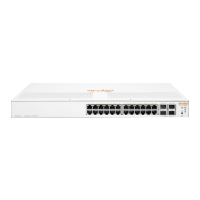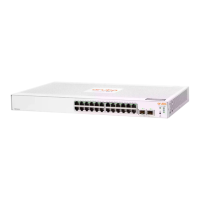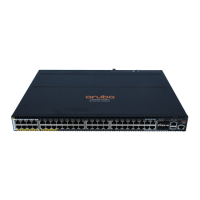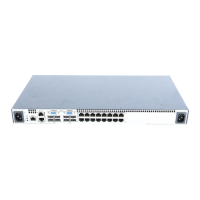OOBM and switch applications
The table below shows the switch applications that are supported on the OOBM interface as well as on the data
interfaces. In this list, some applications are client-only, some are server-only, and some are both.
Application Inbound OOBM
(server)
Outbound OOBM
(client)
Inbound data plane
(server)
Outbound data
plane (client)
Telnet yes yes yes yes
SSH yes yes
1
SNMP yes yes yes yes
TFTP yes yes yes yes
HTTP yes
1
yes
1
SNTP
1
yes
1
yes
TIMEP
1
yes
1
yes
RADIUS
1
yes
1
yes
TACACS
1
yes
1
yes
DNS
1
yes
1
yes
Syslog
1
yes
1
yes
Ping yes yes yes
4
yes
Traceroute yes
4
yes yes
4
yes
1
N/A = not applicable
2
***=Ping and Traceroute do not have explicit servers. Ping and Traceroute responses are sent by the host stack.
For applications that have servers, oobm/data/both options have been added to listen mode. There is now a
listen keyword in the CLI commands to allow selection of those options. Default value is both for all servers.
Example
In a typical data center installation, top-of-rack switches connect servers to the data network, while the
management ports of those switches connect to a physically and logically separate management network. This
allows network administrators to manage the switches even if operation on the data network is disrupted.
Chapter 22 Network Out-of-Band Management (OOBM) 733
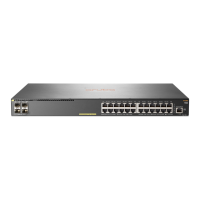
